History is littered with possibilities, and the only thing historians love more than bickering among themselves is speculating about what might have happened if the past had played out differently.
More than 40 years ago, some of World War Two’s biggest surviving military names from both sides of the English Channel sat down at Britain’s version of West Point to see how things might have gone if Adolf Hitler had invaded England.
First, the back story:
 Nazi Germany was on a roll in 1940. Its Panzers had breezed through Poland the previous fall. When they were hustled west and unleashed on France the following May, that country fell in weeks. Germans goose-stepped their way through Paris … something the Kaiser’s troops failed to do in World War One.
Nazi Germany was on a roll in 1940. Its Panzers had breezed through Poland the previous fall. When they were hustled west and unleashed on France the following May, that country fell in weeks. Germans goose-stepped their way through Paris … something the Kaiser’s troops failed to do in World War One.
Only England, tiny, isolated little England, was left to face the Nazis alone. The U.S. was still mired in official neutrality, and Hitler had secretly cut a deal with Stalin that kept the Soviets on the sidelines. Churchill bravely vowed to “never surrender” – bluff talk to realists. In their eyes, Britain would soon be the next entree on the Nazi buffet of nations.
Germany’s high command began making preparations for invading England. Code-name: Operation Sea Lion. Target date: September 1940.
Right off the bat, Germany faced a big problem. Sure, it had plenty of fast planes, ferocious tanks and lots of soldiers. But how were they to get all that stuff across the English Channel?
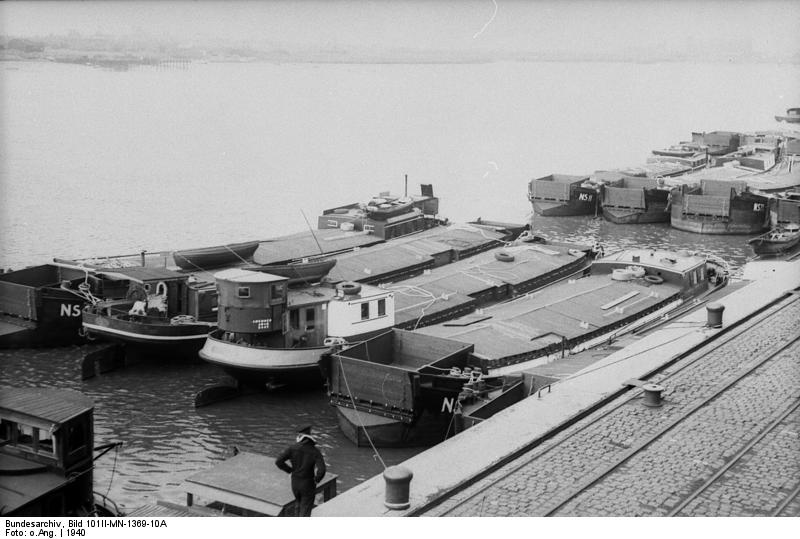 The Nazis didn’t have anything remotely close to the landing crafts the Allies used so successfully when they stormed the beaches at Normandy and retook France four years later. That left the Germans scrambling to turn inland river barges into coastal landing craft. Each one required a major overhaul; it was like turning a camel into a race horse. And the finished product wasn’t very good.
The Nazis didn’t have anything remotely close to the landing crafts the Allies used so successfully when they stormed the beaches at Normandy and retook France four years later. That left the Germans scrambling to turn inland river barges into coastal landing craft. Each one required a major overhaul; it was like turning a camel into a race horse. And the finished product wasn’t very good.
Then there was the problem of air superiority. Though Germany’s Luftwaffe was mighty, Britain’s Royal Air Force (RAF) was feisty and aggressive. It had to be obliterated before any Channel crossing could be attempted.
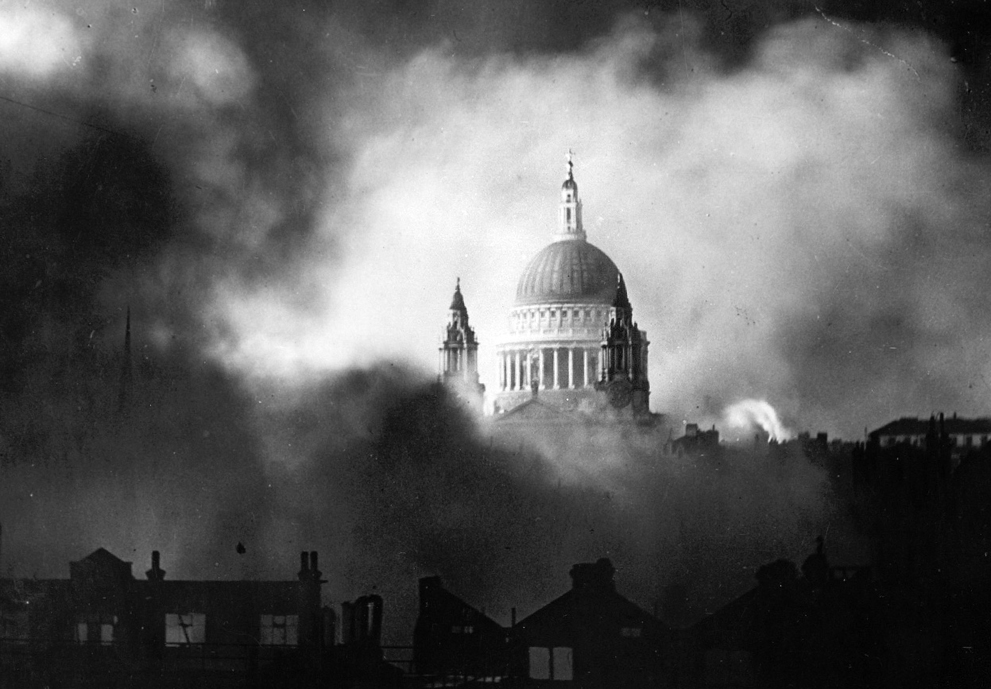 So Hitler began what we now know as the Battle of Britain. Thankfully for the Free World, it didn’t go the way the Nazis planned. Brits are scrappy fighters, and they were at their best defending their skies. When September finally rolled around, it was obvious Germany didn’t dominate the air, giving Hitler a severe case of cold fleet. A different invasion had seized his imagination: a massive surprise attack on the Soviet Union (which he went on to launch in June 1941).
So Hitler began what we now know as the Battle of Britain. Thankfully for the Free World, it didn’t go the way the Nazis planned. Brits are scrappy fighters, and they were at their best defending their skies. When September finally rolled around, it was obvious Germany didn’t dominate the air, giving Hitler a severe case of cold fleet. A different invasion had seized his imagination: a massive surprise attack on the Soviet Union (which he went on to launch in June 1941).
You know how the story went from there. America eventually entered the war, and with U.S.-British-Canadian forces driving from the west as the Soviet’s gigantic Red Army roared in from the east, Hitler wound up putting a pistol to his head deep in his Berlin bunker and pulling the trigger.
 So Operation Sea Lion never happened.
So Operation Sea Lion never happened.
Until 1974.
Three decades after the war, experts decided it was finally time to determine once and for all what would have happened if the Germans had tried to come ashore. This was no casual debate among barstool blowhards, either. It was a very serious, very scholarly, very detailed exercise.
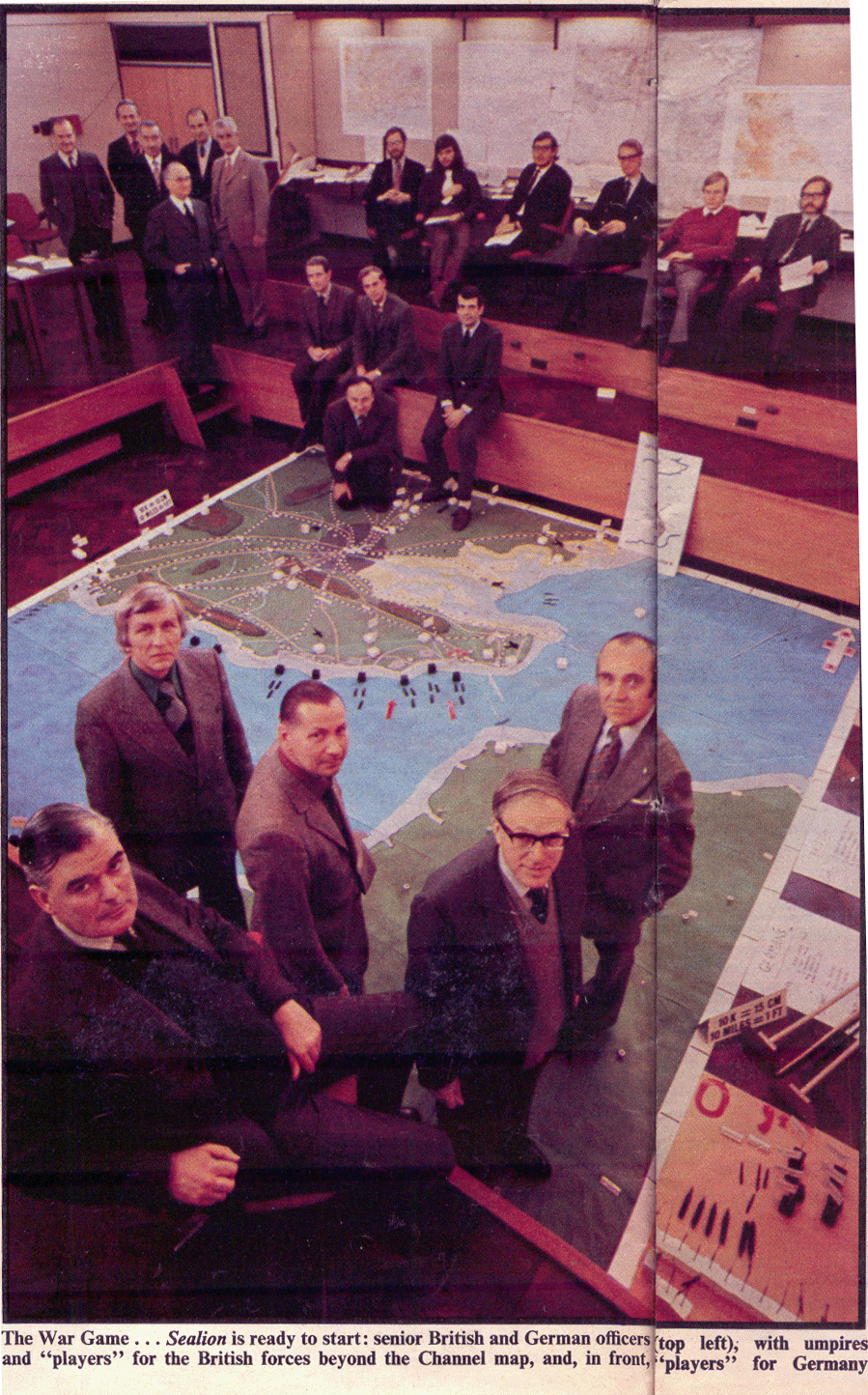 The Daily Telegraph newspaper partnered with Royal Military Academy Sandhurst (as I said earlier, the U.K.’s version of West Point), which hosted the event. It was meticulously planned by a distinguished British military theorist, historian and author.
The Daily Telegraph newspaper partnered with Royal Military Academy Sandhurst (as I said earlier, the U.K.’s version of West Point), which hosted the event. It was meticulously planned by a distinguished British military theorist, historian and author.
A scale model of southeast England, the English Channel and northern France was built. All troops, boats and planes available to both sides were available to the war-gamers. September 1940’s actual weather conditions were factored in, as were the historical plans of the Germans to invade and the British to defend.
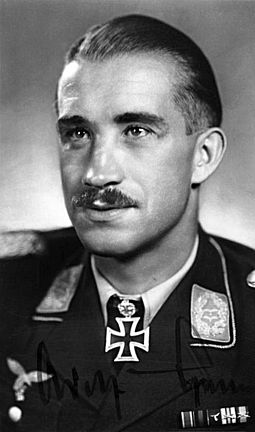 Surviving top brass, Axis and Allied alike, recreated their original roles. The German team was headed by Luftwaffe fighter ace Adolf Galland, who flew 705 missions and was credited with 104 aerial victories. He was supported by Admiral Friedrich Ruge and Wehrmacht General Heinrich Trettner, along with dozens of other former officers.
Surviving top brass, Axis and Allied alike, recreated their original roles. The German team was headed by Luftwaffe fighter ace Adolf Galland, who flew 705 missions and was credited with 104 aerial victories. He was supported by Admiral Friedrich Ruge and Wehrmacht General Heinrich Trettner, along with dozens of other former officers.
Retired Air Chief Marshal Sir Christopher Neil Foxley-Norr headed the Brits, with Rear Admiral Teddy Gueritz, Major General Glyn Gilbert and a couple of dozen others in tow. In all, more than 50 decision-makers were involved in the mock invasion.
So the clock was turned back to dawn on September 22, 1940 … and Hitler finally got the chance he passed on 34 years before.
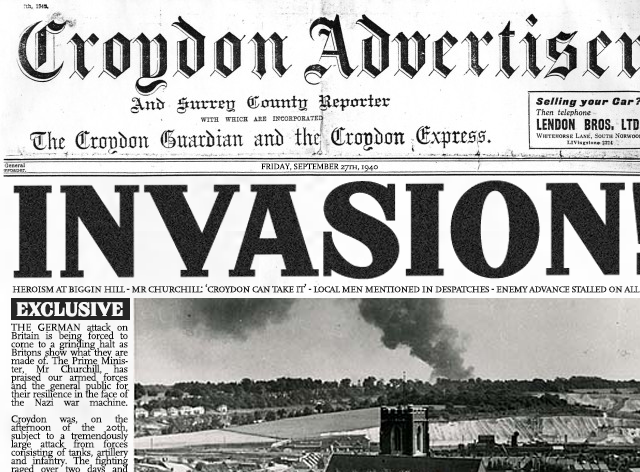 Things got off to a good start for the Germans. Some 8,000 paratroopers landed on English soil in and around the coastal community of Folkestone, just south of the famous White Cliffs of Dover. More than 80,000 infantry followed in amphibious landings.
Things got off to a good start for the Germans. Some 8,000 paratroopers landed on English soil in and around the coastal community of Folkestone, just south of the famous White Cliffs of Dover. More than 80,000 infantry followed in amphibious landings.
Despite having to use those clunky, cumbersome barges (the Germans lost about 25% of them in the Channel crossings), the first 24 hours went relatively well for the Nazis. There was heavy fighting in the air that first day, with 237 RAF planes shot down while the Luftwaffe lost 333.
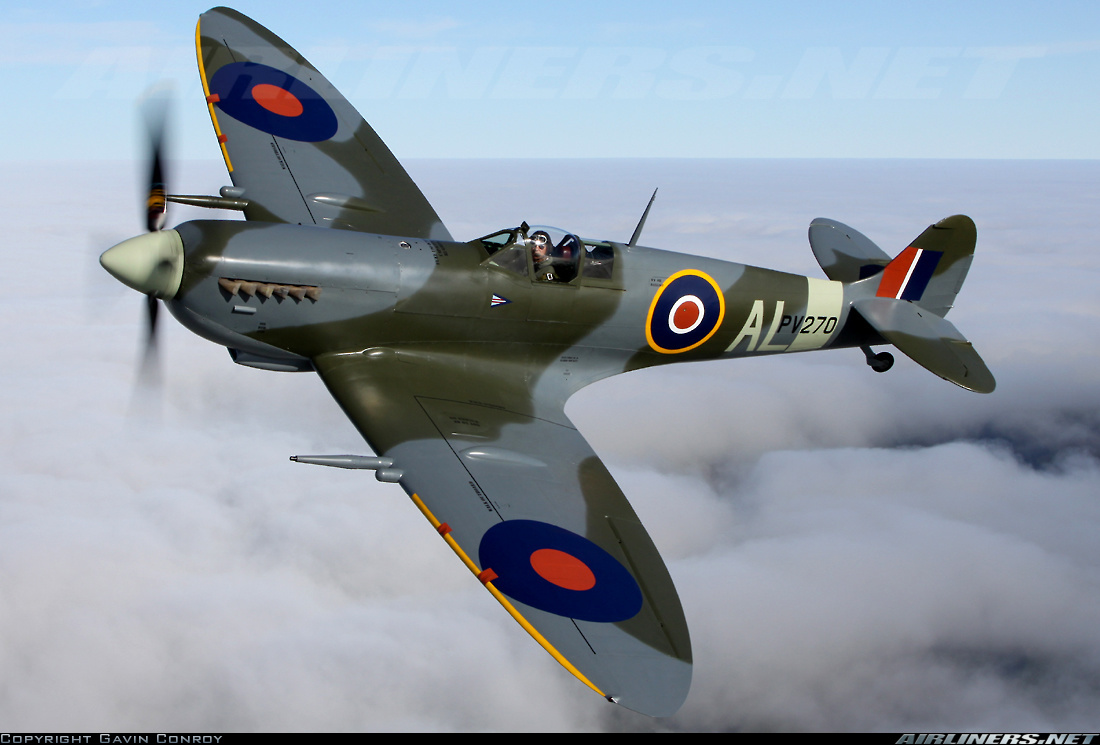 Over the next two days, the Germans pushed their way inland about twelve miles. They seized the port at Flokestone (though the Brits had destroyed the docks beforehand, leaving it useless to the invaders).
Over the next two days, the Germans pushed their way inland about twelve miles. They seized the port at Flokestone (though the Brits had destroyed the docks beforehand, leaving it useless to the invaders).
Then the Nazi advance stalled. A growing number of British troops were reaching the battle line – and they were bringing lots of tanks and cannons with them. The Germans, on the other hand, were having a hard time hauling armor and artillery across the Channel. They were running low on ammo, too, which eventually forced them to start slowly falling back to the sea.
At this point, the German commander asked “Hitler” to divert bombers from London and attack British warships. The answer from Berlin: Nein! Big mistake.
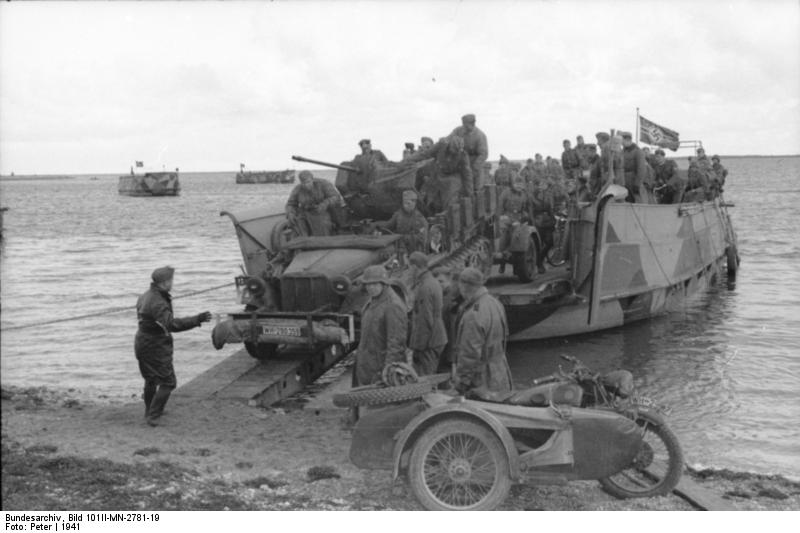 So the Nazis went ahead with the next phase of Sea Lion as planned. They tried a second landing at dawn on September 25. But this time the Royal Navy swept in and got to the invaders before they could get to the beach, sending 65% of the makeshift barge/landing crafts to the bottom on the Channel.
So the Nazis went ahead with the next phase of Sea Lion as planned. They tried a second landing at dawn on September 25. But this time the Royal Navy swept in and got to the invaders before they could get to the beach, sending 65% of the makeshift barge/landing crafts to the bottom on the Channel.
That sealed the invasion’s fate. With the RAF controlling the skies and the Royal Navy controlling the waves, the Germans had no choice but to withdraw.
When all was said and done, of the 90,000 Germans troops involved in the “invasion,” 26,000 died in combat, 15,000 drowned trying to cross the Channel, and 33,000 were captured. That meant just 15,400, only 17.1% of the original force, made it back to France.
It was a resounding failure. There were no ifs, ands or buts: all six the game’s umpires unanimously declared a British victory. The result was so conclusive, the German team didn’t challenge the outcome.
One of history’s great What If’s finally had an answer.
And who knows … maybe that old wartime song by Britain’s Vera Lynn (who’s still alive at age 98, by the way) was right after all:
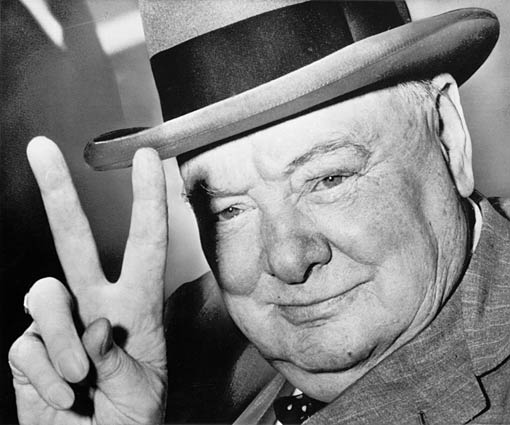 “There’ll always be an England,
“There’ll always be an England,
And England shall be free;
“If England means as much to you
As England means to me.”
Indeed. (And having plenty of planes, tanks and cannon on hand wouldn’t hurt, either.)
Did you find this enjoyable or helpful? Please continue to join me each week, and I invite you to read Tell it Like Tupper and share your review!
Curious about Tell It Like Tupper? Here’s a chance to see for yourself. Take a sneak peek at a couple chapters in this free downloadable excerpt.


Very interesting and insightful article. I greatly enjoy stories of alternate histories, and this article definitely fit the bill. Highly recommended reading for students of history.